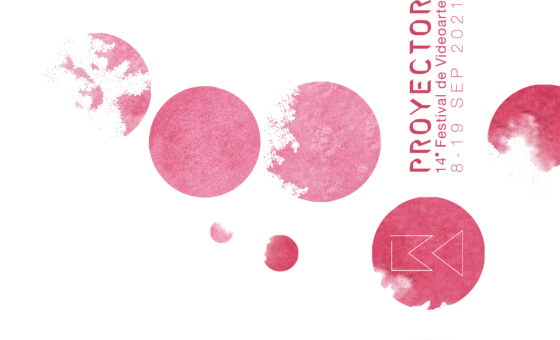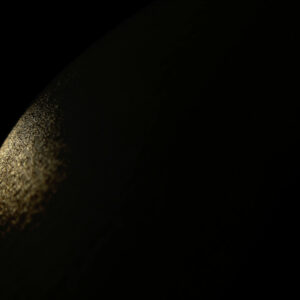ARTISTAS 2021
Imaginary spaces
Sala Equis
Artistas: Catherine Radosa (fra/che), Adrián Guerrero (méx), Hasan Daraghmeh (pal), Gnawa Collective (marr), Francisco Pradilla Barrero (esp), Ariel Uzal – Julieta Caputo (arg), Sara Carneiro (por) y Alexander Isaenko (ukr)
¿Qué pasa si simplemente no aceptamos nuestra estructura de tiempo? ¿Qué pasa si exploramos las posibilidades de las técnicas de video, en busca de nuevas estructuras con respecto al tiempo y el espacio? ¿Podemos acercarnos más a nuestra imaginación, a nuestros sueños con eso? – ¿O por qué no simplemente repetir los momentos que nos gustan, hacer que se repitan y dejar otros fuera?
En la obra de video The Door, Hasan Daraghmeh está creando una estructura arquitectónica a través de la repetición de un solo movimiento. El acto de abrir una puerta y entrar en una pequeña habitación se repite hasta el límite, hasta los bordes de nuestras mamparas. Y aunque es obvio que la relación de aspecto de pantalla ancha de 16:9 o los bordes de nuestras pantallas definirán al final el tamaño de la arquitectura, no paramos de ver el vídeo. Entonces, se trata menos del espacio específico que se crea. No esperamos que una narración emergente nos sorprenda. Se trata más del ritmo al que estamos cayendo, del sonido que está estructurando el proceso de creación y desmantelamiento de un espacio. Nos damos cuenta del efecto meditativo que puede tener la repetición. Alexander Isaenko también usa el método de repetición en su trabajo de video Existo minima, pero de manera diferente. Existo mínima muestra una vista panorámica de una playa tranquila donde la gente camina. Muy pronto nos damos cuenta de que el artista deja que los caminantes desaparezcan de vez en cuando. Solo por unos segundos, la gente se desvanece en el aire, como si existieran agujeros negros en esta playa. Al principio es asombroso ver eso, pero lo realmente interesante es que al repetir el momento surrealista de dejar que las personas aparezcan y desaparezcan de forma natural, dejamos de preguntarnos. El fenómeno se vuelve normal. Los límites entre el mundo real e imaginario parecen fluidos. En el video Motherland de Catherine Radosa incluso podemos ver dos espacios diferentes al mismo tiempo. Sabemos que el video muestra un espacio muy íntimo, un primer plano del vientre de una mujer embarazada. Pero el uso de ciertas perspectivas de cámara, luces y el encuadre específico hacen posible ver otro espacio en otra dimensión al mismo tiempo, un espacio exterior en realidad, un planeta. Es el uso muy específico de técnicas de video que satisface nuestro deseo de imaginar nuevos espacios que les permitan, aunque solo sea brevemente, aparecer.
What if we are just not accepting our structure of time? What if we explore the possibilities of video techniques instead, in search of new structures regarding time and space? Can we get closer to our imagination, to our dreams by that? – Or why not just repeat the moments we like, make them loop and leave others out?
In the video work The Door Hasan Daraghmeh is creating an architectural structure through the repetition of a single movement. The act of opening a door and entering a small room is repeated to the limits, to the edges of our screens. And although it’s obvious that the widescreen aspect ratio of 16:9 or the edges of our screens will define the size of the architecture in the end, we do not stop watching the video. So, it’s less about the specific space that is created. We don’t expect an arising narration to surprise us. It’s more about the rhythm we are falling into, the sound that is structuring the process of creating and dismantling a space. We become aware of the meditative effect repetition can have. Alexander Isaenko also uses the method of repetition in his video work Existo minima, but differently. Existo minima shows a scenic view of a calm beach where people are walking. Very soon we realize that the artist lets the walkers disappear once in a while. Just for a few seconds, people vanish into thin air, like there would exist black holes on this beach. In the beginning it’s astonishing to see that but what’s really interesting then is that by repeating the surreal moment of letting people appear and disappear naturally we stop wondering about. The phenomenon becomes normal. The boundaries between the real and imaginary world seem to be fluid. In Catherine Radosa´s video Motherland we can even see two different spaces at the same time. We know that the video shows a very intimate space, a close-up of the belly of a pregnant woman. But the use of certain camera perspectives, lights and the specific framing make it possible to see another space in another dimension at the same time, an outer space actually, a planet. It’s the very specific use of video techniques meeting our desire to imagine new spaces that let them – if only briefly – appear.
Texto: Julia Tazreiter









